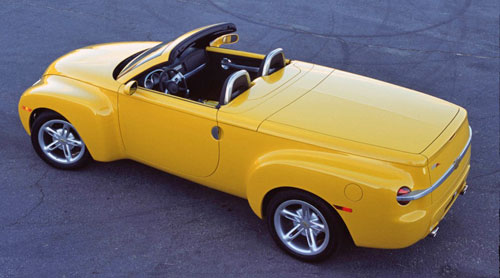A Production Chevy Code 130R?

Yes, please.
Left Lane reports Chevy may be considering a production version of their well-received Toyota FR-S/ Subaru BRZ-fighter, the Code 130R concept car:
GM hasn’t officially green lighted the 130R, but the Detroit-based automaker is at least considering ways to make the car a reality. …
[A] production version of the 130R would be loosely based on a version of the rear-wheel drive Alpha platform that underpins the Cadillac ATS.
Considering the Alpha platform is arguably the most successful piece of the ATS package—most reviews gush over its handling poise, steering feel and overall balance—a dealership-ready Code 130R built on that chassis would likely stand a good chance of being Chevy’s first real driver’s car since, well, ever.
Granted, to secure my fandom, Chevy would have to cleave to the concept’s formula and develop a FR-S/BRZ alternative. In practice, this means they would have to keep the weight low (sub-3,000 lbs), keep the car low-priced and basic, emphasize the fun-to-drive factor and above all, keep it RWD. If Chevy does all that, they’ve got a least one banner-waver in the enthusiast community right here.

The sticking point in the whole idea is the fact that Chevy’s own V6-engined Camaro occupies roughly the same low-$20K price point as the Code 130R presumably would, packs a good deal more punch under the hood and has massive name recognition to boot. Is the market for small, back-to-basics RWD sports cars strong enough to support both the FR-S/BRZ twins and the Code 130R? Given the choice, would enough buyers opt for a slower but more fun-to-drive 130R over a V6 Camaro if both are similarly priced? Open questions, but ones I’d love to see explored.
Image credits: cars.about.com, otoplush.com

















